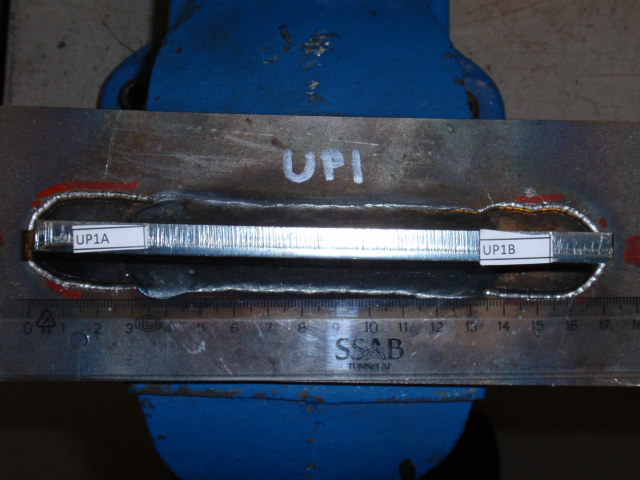History
History
The peening technique is a relative old post-weld treatment. It was
first developed during the second world war by the German army to treat
welds by hamring in order to avoid cold cracks. In the Soviet Union
during the Cold War the hamring was combined with magnetostrictive high
frequency devices so the hamring was generated at ultrasonic frequencies
and induced to the pin or working head and further to the weld itself.
The technique is proven to be better than all other peening techniques
and is the best one available on the market today and can extend the
life up to 4 times for the concerned weld.

The treatment, consisting of inducing ultrasonic waves to the weld, is
able to reduce welding stresses and deformations while increasing the
compressive stresses needed to prevent the origin and/or propagation of
fatigue cracks. However, the main and long-standing effect is the
creation of a weld toe groove which drastically decreases the local
stress concentration at the weld toe where normally fatigue cracks
starts. An own research report (1993) showed the existence of cold-laps
or lack of fusion defects at weld toe region which by no uncertain terms
always will be the origin of fatigue cracks.
The existence of these micro-cracks at the weld toe, even before the
structure left the workshop implies the as-welded condition of any weld
consists only of the crack propagation time of an original cold-lap
defect. As the weld toe groove is formed, by the ultrasonic peening
treatment, the cold-laps are removed and the time of propagation of a
fatigue crack is replaced by its time to initiation and its time of
propagation, extending in that way the total fatigue life of the weld.
Whereas the compressive residual stresses may or may not be relaxed
during the service life of the structure, depending on the loading
sequence, the geometrical improvement due to the creation of weld toe
groove will act to decrease the local stress concentration during the
remaining service life.
